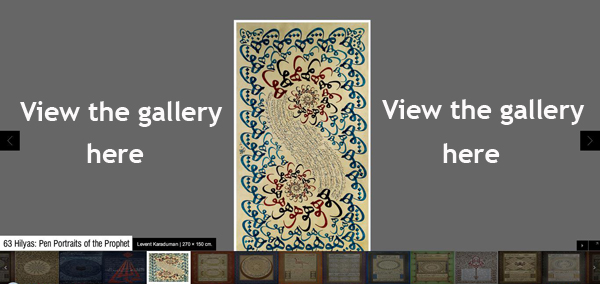For Muslims who avoid visual representations depicting human beings, especially that of the prophets, the millenary expression within the Islamic tradition allowing for the portrayal of the person of Prophet Muhammad has been the hilya, his pen portrait.
Denoting ‘quality, characteristic or form’, as well as ‘decoration or ornament,’ hilya, within the Islamic context, refers to the literary genre which elaborates on the features and merits of the Prophet Muhammad. Also known with the titles ‘Portrait of Happiness’ and ‘Portrait of the Prophet’ (hilya-i saadat and hilya-i nabawi respectively,) the genre describing the characteristics, the physical, personal, and moral attributes and virtues, as well as the actions and behavior of God’s Messenger has an important place within Islamic literature and calligraphy.
The 63 calligraphic hilya forms presented here are from the Mehmet Çebi Collection (Curator, Erkan Doğanay) chosen from among thousands of individual, each unique, calligraphic works that the artist has collected over the long years he has devoted to this form of expression. The significance of the number 63 pertains to the 63 years that the Last Prophet lived.
Lastprophet.info is indebted to Mehmet Çebi for his kind permission to use these images.


